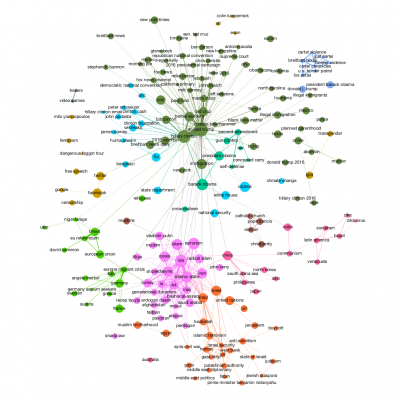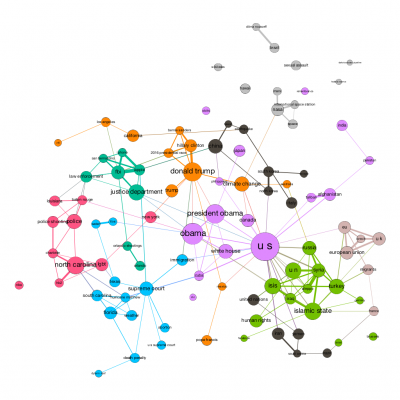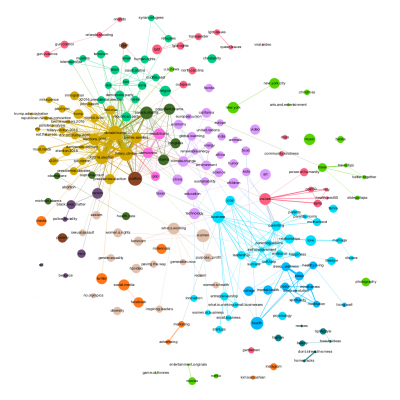

Ignorance, Humility, and the Creationism Culture Wars By Adam Laats
Ignorance, Humility, and the Creationism Culture Wars
By Adam Laats
February 2019
Laats is Professor of Education at Binghamton University (State University of New York). He is the author, most recently, of Fundamentalist U: Keeping the Faith in American Higher Education (Oxford University Press, 2018). His current book manuscript is tentatively titled We Don’t Disagree about Evolution: Finding New Middle Ground in the Creationism Culture Wars. He tweets @AdamLaats and blogs at I Love You but You’re Going to Hell.
What is creationism? If we ask the likes of Oxford’s Richard Dawkins, the answer is obvious: Creationism is ignorance, pure and simple. As he put it, creationists must simply be “ignorant of science.” And yes, ignorance is at the center of our continuing battles over creationism. But not in the simplistic way Dawkins and his allies think. Professor Dawkins is missing a central element of ignorance, an element that has always defined America’s creationism culture wars. In fact, he’s guilty of it himself.
First, a disclaimer: I’m no creationist. As I’m arguing in my current book and as I’ve argued in other publications, I believe religiously inspired science has no place in public-school classrooms. We don’t need to be sympathetic to creationism, however, to notice that our public discussions about it are often misguided and mistaken, warped by our widespread ignorance about creationism.
For example, what does creationism look like? For many secular people like myself, the stereotype of American creationism is confirmed by the jaw-dropping antics of radical creationists. Take the case of Mary Lou Bruner. In 2016, she was a leading contender for the chairmanship of Texas’s state school board. And she insisted that evolution caused school shootings. She also knew that Noah’s ark included baby dinosaurs, but, as “scientists” had convinced her, the little dears were too small to survive in the aftermath of the worldwide flood. Just for good measure, Ms. Bruner also informed her Facebook friends that President Obama was a gay prostitute and that the USA should uphold religious freedom by banning Islam.
If we think Bruner defines American creationism, however, our ignorance will lead us in misleading directions. What will we make of the case of Francis Collins, another prominent American creationist? Say what you will about his religious beliefs, it is impossible to dismiss Collins’ scientific credentials. As the head of the National Institutes of Health and a lead mapper of the human genome, Collins’ creationism does not reflect any ignorance of science. Yet, as Collins likes to argue, “The God of the Bible is also the God of the genome.”
Even less-famous creationists tend to have a more complicated knowledge about evolution than non-creationists might think. When the National Board of Science surveys Americans about their science knowledge, for instance, they come up with confounding results. For example, in 2012 the NSB asked people if humans had evolved, and a majority of respondents said no. But when the NSB asked people if “according to the theory of evolution” humans had evolved, a much larger majority said yes.
What are we to make of these results? Are Americans ignorant of evolution when they say they don’t “know” it, but not ignorant when they “know” that scientists think evolution happened? Are field-leading scientists like Francis Collins somehow ignorant about science? Are radicals like Mary Lou Bruner somehow the real creationists because they fit our stereotype of ignorance and extremism?
The answers are not clear, but it does seem clear that we don’t know as much about the relationship between ignorance and creationism as we might have thought. In cases like this, it seems only reasonable to maintain a healthy humility about our disagreements. Instead of listening to the likes of Richard Dawkins, it makes more sense to remember the words of Will Rogers, who famously declared in 1924, “Everybody is ignorant, only on different subjects.”

Convicted in the Silences by John Sarrouf
Convicted in the Silences
by John Sarrouf
December 2018
I am standing in front of my classroom of students. I ask a question. It is a simple question about the reading. The room is silent. Moments go by that seem like an eternity. What is going on in my silence?
“Nobody did the reading.”
“Are these kids even listening”
“Did the question not make sense?”
“I am a horrible teacher. Maybe I should open a bakery.”
More importantly, what is going on in their silence?
“I know the teacher has an answer in his mind - but I don’t want to guess and be wrong.”
“I don’t know what I think about this.”
“The last time I raised my hand to answer someone went after me and I didn’t know what to say to them.”
When we first applied for the Intellectual Humility grant it was clear that our dialogue work spoke directly to the mission of the grant. The tenets of dialogue are perfectly in line with intellectual humility as thinkers like Mark Alfaro and Benjamin Meagher describe them - qualities like openness to the ideas of others, willingness to be curious, to decenter oneself from the conversation, willingness to admit not knowing.
Asking people to listen, reflect, ask genuinely curious questions - these are all perfect antidotes to the strident, self-centered, and hubristic thinker. And with the level of polarization and diatribe that fills our airways these days, and the reports of campus protests and heated debates in classrooms flying off the pages of the Chronicle of Higher Ed, it seemed the perfect fit. We will teach teachers to use dialogue in the classroom, which will invite people to be more open, curious, decentered and willing to be wrong or not know.
But when we moved out into the first phase of the project to interview colleagues across the country - the response when we mentioned Intellectual humility was often - I wish my students were strident or outspoken. I wish I had the problem you are speaking about. What I get is silence. “Please have a thought and share it!” Rather than humility, It is identifying a conviction that is the struggle for many college students. And the same was true for the majority of students in my classes as well. It is the lack of conviction or the unwillingness to share it that pervades the silences in my class. That doesn’t mean that students don’t care or aren’t smart - it is that they have never been given the space, permission, or support to make the connections. “I don’t know what I think or why and I am not sure I would say it in class if I did.”
What became clear is that Reflective Structured Dialogue worked just as well to support the development of convictions than in helping people hold them with humility. The kind of inquiry, the space to reflect, the permission to speak, the expectation of deep listening, the shape of the room, all contribute to a student’s ability to dig deep into their lives and begin to bring forth their values and convictions.
The typical sequence of opening questions in a reflective structured dialogue asks people to think of an experience that has informed the way someone sees or understands an issue. Many students report not really knowing how to tell a story or link an experience to a value or set of beliefs - they don’t know where in their own life influences their convictions or where their deeply held values stem from.
But linking a story to a value to a conviction to their own observations or study leads students to emerge from their latent unknowing to a or self-affronting
This journal reflection from a student of my colleague expresses what we see over and over again.
“In class, we began a discussion about the death penalty. This was really interesting to me, because it is not something I have a very strong opinion about, but it was clearly so for some of the members of my group, which I completely understand. I generally take an “in the middle” stance for many topics like this, and that is something that I would like to change about myself. This activity made me think about how I should actually form reasons for my opinions. I know that I have opinions, but when I really think about it, I do not know why. It is safe to say that my opinion does differ from my parents, but how did I form this, where did it come from? This exercise really made me think about this…. I really appreciate that this activity made me want to make my opinions about controversial topics actually have reasons that I can support and argue well, which I was definitely struggling with.”
Or this from the end of the year reflection from another student.
“Before enrolling in this class, I had always accepted that I was never going to be as knowledgeable about religion as some of my friends who had grown up with it in their lives. Because of this, I shut down when any conversation about religion came up and didn't feel comfortable participating in that dialogue. ... After taking this class I realize that religion is a conversation that I should get involved in. ...Most importantly, this class has made me realize that religion (and life) isn't always black and white. There are people who, upon first glance, have completely differing opinions than my own; however, through the discussions in this class...changed how I wish to view myself in the world the most. I no longer want to be absent from difficult conversations. I want to be present and speak to others about difficult issues and most importantly, I want to help others figure out ways to learn the same important ideas about communication that I didn't even know I was missing out on.
What is so evident from the study so far is that the two elements of conviction and humility work hand in hand. The more certain strident students step back and get curious, the more my more reluctant participants are able to step in. If the students who usually participate are doing so by asking genuinely curious questions, then the quiet ones are answering.
I have come to cherish the silences in my class - the purposeful and reflective silences where stories are being conjured and convictions developed. I have built the silences into my classroom so that students know they should go deep. Silence is no longer a place of threat to me or the students, it is an offer to reflect on the stories that shape us and values that move us.

Addressing a culture of disrespect: Arrogance and Anger in Debate by Alessandra Tanesini
Addressing a culture of disrespect: Arrogance and Anger in Debate.
by Alessandra Tanesini
November 2018
Public debates throughout the Western World have descended into polarized shouting matches. Mocking, bullying and silencing one’s opponents have become omnipresent in the context of discussions where winning is everything and the truth counts for nought. While there might be circumstances where anger and forceful indignation are warranted, there is little doubt that the current climate is one in which disrespect for one’s political opponents is prevalent.
Our times are characterized by widespread uninhibited anger. But ours is also an age of arrogance. It is arrogance that is responsible for the mocking, the bullying, and the silencing. When President Trump mocks Christine Blasey Ford who had not targeted him in her dignified testimony to the US Senate Judiciary Committee, arrogance is on display.
There is a special kind of arrogance that I have labelled haughtiness or superbia that manifests itself in a need to do others down so that one can feel superior to them. It is the form of arrogance of those who are obsessed with winning, who are prone to humiliate others in many ways and to refer to them as losers.
I have argued elsewhere arrogance is often associated with anger.[1] Anger is a negative response directed at a person who is perceived as having done intentionally something that wronged us or those we hold near and dear. The desire to retaliate is also an intimate element of anger. Some of the wrongs that elicit anger in response are slights or personal insults. These are perceived wrongs that directly harm the social status of the person who has been harmed in this way.
Arrogant individuals experience mere disagreements or requests for clarifications as slights and affronts. Although this perception is often unwarranted, arrogant people behave in this way because, often unconsciously, they think of themselves as judges or referees. They behave as if their opinions had the force of verdicts rather than of contributions made by equal discussants in debates. That is, these arrogant individuals feel that their views are not up for discussion. It is this sense of entitlement that causes them to experience challenges as affronts. It is also the basis of their feelings of superiority.
Since arrogant people experience disagreement as a slight -a threat to social status- they respond by trying to get even. Hence, they are angry. They take themselves to be entitled to a place at the top of the pecking order. It is a pecking order that they are keen to defend by mocking, humiliating, angrily intimidating other people.
Because the arrogant person ties up in his mind his own self-esteem and self-respect with being superior to others and with deserving special entitlements, his sense of self-worth is fragile. Ordinary behaviour by other people is felt as a threat to the self. The perceived slight instigates a desire to do others down to preserve one’s special entitlements. This is why arrogant people are angry.
Arrogance and anger feed each other. They are part of a vicious circle of ever increasing aggression and disrespect. The arrogant person needs to feel superior in order to have a good opinion of himself. He experiences equal treatment as an insult that must be remedied. Experiencing disagreement as a slight threatens to lower the social status of the arrogant individual at least in his own eyes. He feels he risks becoming the kind of person that others think can be treated like anyone else. Since he feels diminished, he reacts in anger to restore his self-esteem. But this anger, this need for retaliation, exacerbates the fragility of his self-esteem. He thus becomes more defensive, more arrogant and then even more disposed to anger.
These considerations suggest the hypothesis that arrogance is a defensive mechanism adopted by those whose high self-opinion is insecure. They hide their insecurity through aggression. There is empirical support for this proposition. Social psychologists have found that some individuals possess attitudes to the self that are discrepant. These people appear to have a high opinion of themselves as these attitudes are measured explicitly by means of questionnaires. However, when their attitudes about themselves are measured indirectly they appear to have low self-esteem. Indirect measures include Implicit Association Tests but also assessments of the name letter effect where the extent to which subjects prefer the first letter of their proper names is measured. Those people who have high self-esteem in explicit measures and low implicitly measured self-esteem are described as possessing defensive high self-esteem. These are individuals who are very defensive, act arrogantly, are boastful, are on average more prejudiced than other people, and are disposed to anger. In sum, there is reason to believe that arrogance is underpinned by defensive high self-esteem.[2]
In our current work for the project Changing Attitudes in Public Discourse we are testing whether defensive high self-esteem is predictive of seemingly arrogant behaviours in debate. These include being disposed to interrupt other speakers without possessing a similar tendency to offer supportive feedback. We are also developing an intervention to reduce arrogance in debate. We are testing whether self-affirmation techniques, designed to make the self less vulnerable to threats, might be effective in promoting humbler and calmer behaviour in debate. The preliminary results of this study will be available early next year on our website.
[1] Tanesini, A. Forthcoming. ‘Arrogance, Anger and Debate’, Symposion: Theoretical and Applied Inquiries in Philosophy and Social Sciences, Special issue on Skeptical Problems in Political Epistemology, edited by Scott Aikin and Tempest Henning. For a draft visit, https://tanesini.wordpress.com/publications/.
[2] For more details on the empirical literature, see Tanesini, A. In Press. ‘Reducing Arrogance in Public Debate’, In J. Arthur (Ed.), Virtues in the Public Sphere (pp. 28-38). London: Routledge. For a draft see https://tanesini.wordpress.com/publications/
[twitter_share size="large"]

Being humble in the face of complexity by Graham Smith
Being humble in the face of complexity
by Graham Smith
October 2018
I am leading a project that aims to compare the effectiveness of different forms of argument visualization software to improve the quality of public discourse in online media comment forums. We all know the problems with online discussions - threads that are hard to follow, abusive behavior by a small minority, too much focus on the personalities of who is speaking rather than the arguments. The platforms we are testing take us away from a focus on the qualities of who said what, to the qualities of what has been said - the quality of ideas and arguments. We are interested in whether these new formats can promote intellectual humility among participants and their interactions with one another.
But to do this, we have had to build a novel online space, with three different test environments, with the aim of attracting around 5,000 people from around the world to use the different platforms. What has become clear is that intellectual humility is not just something we should seek amongst those participating in the experiment, but a critical virtue that needs to be embodied by those of us engaged in what has become a much more complex project than any of us imagined.
The three investigators are all from the discipline of political science and have varying experience with and knowledge of online technologies. In order to create an effective and attractive online space, we have had to engage with a range of specialists with very different experiences, knowledge and expectations: platform developers, coders, internet marketers, website designers, and engagement specialists, not to mention three enthusiastic students and a slew of moderators around the world. In order to negotiate this diversity of experience, knowledge and expectations - and to keep everyone happy - has been a feat of intellectual and practical plate spinning for all concerned. And the force that has kept these plates spinning? Intellectual humility on all our parts: the recognition that other people know more than you on different aspects of the project and it is imperative to listen, learn and appreciate what they bring to the table. Recognizing the limits of one’s own knowledge is, sadly, not something that is much celebrated in academic or other circles. But it has been imperative for the project to succeed. There is a tendency to retreat into areas where we know we will be comfortable. This project demands an openness to learning new skills – and trusting in the knowledge and skills of others in recognition of our own partiality and limited perspectives. It has been a steep learning curve, but one that we have negotiated (mostly) in good humor and with patience – arguably virtues themselves strongly related to intellectual humility.
Just as we were about to go into the field with our new box of toys, a new challenge emerged in the form of the General Data Protection Regulation of the European Parliament and Council. GDPR, as it is widely known, has changed the face of data policy, providing more data rights to European citizens. This new legislation changed the rules of the game for online research just as we were putting our proposal to the Ethics Committee at the University of Westminster. This led to understandable delays as the research team and the bureaucrats at the university struggled to come to terms with the new legislative environment. It was just our luck to be the first project facing this new set of demands and the changes that were required – in ways that make the experiment safer and more secure for participants – took significant time, energy, and again, intellectual humility. There could have been stand-offs between researchers and administrators, but instead, I am pleased to say, there was (again, mostly) a cooperative spirit of investigation as we worked together to make sense of these new rules.
In the coming weeks, we will discover whether we find intellectually humble attitudes and behaviors amongst our experimental participants. But one thing is for sure, I have found it in abundance amongst my project collaborators. Without that humility, we certainly could not have made it this far.
[twitter_share size="large"]
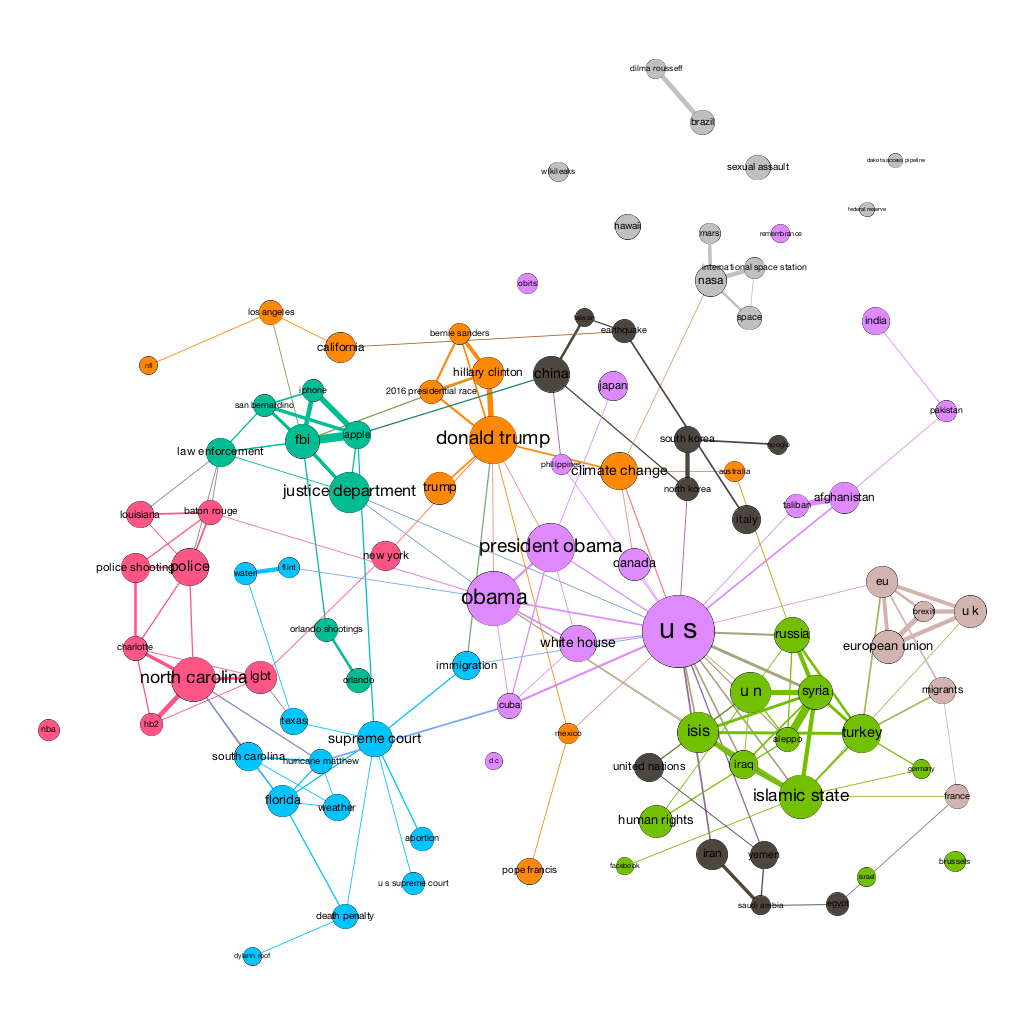
Technological Seduction and Self-Radicalization by Mark Alfano
 Technological Seduction and Self-Radicalization
Technological Seduction and Self-Radicalization
by Mark Alfano
February 2018
The 2015 Charleston church mass shooting, which left 9 dead, was planned and executed by Dylann Roof, an unrepentant white supremacist. According to prosecutors, Roof was found not to have adopted his convictions ‘through his personal associations or experiences with white supremacist groups or individuals or others,’ but instead to have developed them through his own efforts online. The same is true of Jose Pimentel, Tamerlan and Dzhokhar Tsarnaev, Omar Mateen, and others.
The specific mechanisms by which the Internet facilitates self-radicalization are disputed. One popular view is that the Internet generates an echo-chamber effect: people interested in radical ideology tend to communicate directly or indirectly only with each other, reinforcing their predilections.
Surrounding the relatively rare problem of lone-wolf terrorism lies the much more common problem of self-radicalization that results in less dramatic but still worrisome actions and attitudes. The “Unite the Right” rally in Charlottesville, Virginia in 2017 brought together neo-Nazis, white supremacists, and white nationalistic sympathizers for one of the largest in-person hate-themed meetings in the United States in decades. Many of the participants in this rally were organized and recruited via the Internet. Even more broadly, white supremacists and their sympathizers met and organized on r/The_Donald (a Reddit community), 4chan, and other online spaces during the 2016 American presidential campaign that resulted in the election of Donald Trump.
In my work on public discourse, I’ve developed a theory of online radicalization that I call the seduction model. According to John Forrester (1990, p. 42), “the first step in a seductive maneuver could be summed up as, ‘I know what you’re thinking.’” This gambit expresses several underlying attitudes. First, it evinces “the assumption of authority that seduction requires.” The authority in question is epistemic rather than the authority of force. Seduction is distinguished from assault by the fact that it aims at, requires, even fetishizes consent. The seducer insists that he is better-placed to know what the seducee thinks than the seducee himself is. Second, ‘I know what you’re thinking’ presupposes or establishes an intimate bond. Third, ‘I know what you’re thinking’ blurs the line between assertion, imperative, and declaration. This is because human agency and cognition are often scaffolded on dialogical processes. We find out what we think by expressing it and hearing it echoed back in a way we can accept, and by having thoughts attributed to us and agreeing with those.
The seduction model encompasses two ways in which information technologies play the functional role of the seducer by telling users of the Internet, “I know what you’re thinking.” What I call top-down technological seduction is imposed by technological designers, who, in structuring technological architecture, invite users to accept that their own thinking is similarly structured. In so doing, designers encourage or ‘nudge’ the user towards certain prescribed kinds of choices and attitudes. Top-down technological seduction needn’t be a matter of saying or implying, “I know that you’re thinking that p.” It can instead be structural. When Netizens are invited to accept that their own thinking is structured in socially dangerous or hateful ways — as opposed to overly simplistic and misguided ways, choice architects can seduce users to embrace prejudiced and hateful attitudes.
Using a digital humanities methodology, I compare the semantic tags on all stories published in 2016 by Breitbart with the tags used by other news organizations. It quickly becomes clear that the world will look very different to a Breitbart reader than it does to an NPR reader or a Huffington Post reader (Figures 1-3).
Figure 1. Network of the top 200 semantic tags on Breitbart in 2016. Layout = ForceAtlas. Node size = PageRank. Node color = semantic community membership. Edge width = frequency of co-occurrence.
Figure 2. Network of the top 100 semantic tags on NPR’s “The Two Way” news section in 2016. Layout = ForceAtlas. Node size = PageRank. Node color = semantic community membership. Edge width = frequency of co-occurrence. Only 100 semantic tags were chosen for NPR due to its overall sample size which is one order of magnitude less than Huffington Post and Breitbart.
Figure 3. Network of the top 200 semantic tags on the Huffington Post in 2016. Layout = ForceAtlas. Node size = PageRank. Node color = semantic community membership. Edge width = frequency of co-occurrence.
Breitbart consumers see in a world in which the most important news is that Mexican cartels commit atrocities in Texas, Muslim terrorist immigrants rampage through Europe, Barack Obama conspires with the United Nations and Jews, Russia and Turkey intervene in Syria to help fight the Islamic State, Donald Trump prepares to put a stop to illegal immigration to the United States, and Milo Yiannopoulos campaigns against Islam with his “Dangerous Faggot Tour.” Readers of other sites encounter a host of other phenomena that fit less easily into Breitbart’s Manichean worldview, such as right-wing attacks against the LGBT community, Dylann Roof’s sentencing, law enforcement agencies wrestling with technology companies over consumer privacy, and NASA’s exploration of the solar system.
Whereas top-down technological seduction plays out through the agency of designers, bottom-up technological seduction can occur without the involvement of anyone’s agency other than the seducee. It creates suggestions based either on aggregating other users’ information or by personalizing for each user based on their location, search history, and other data. It takes a user’s own record of engagement as the basis for saying, “I know what you’re thinking.” Bottom-up seduction can say, “I know what you’re thinking” because it can justifiably say, “I know what you and people like you thought, and what those other people went on to think.” It occurs when profiling enables both predictive and prescriptive analytics to bypass a user’s capacity for reasoning. I understand reasoning as the iterative, potentially path-dependent, process of asking and answering of questions. Profiling enables online interfaces to tailor both search suggestions (using predictive analytics) and answers to search queries (using prescriptive analytics) to an individual user.
Consider a simple and familiar example: predictive analytics will suggest, based on a user’s profile and the initial text string they enter, which query they might want to run. For instance, if you type ‘why are women’ into Google’s search bar, you are likely to see suggested queries such as ‘why are women colder than men’, ‘why are women protesting’, and ‘why are women so mean’. And if you type ‘why are men’ into Google’s search bar, you are likely to see suggested queries such as ‘why are men jerks’, ‘why are men taller than women’, and ‘why are men attracted to breasts’. These are cases of predictive analytics, which not only predicts but also suggests queries to users based on profiling, with or without aggregation.
Prescriptive analytics in turn suggests answers based on both the query someone actually runs and their online profile. In response to ‘why are women colder than men’, Google suggests a post titled “Why are Women Always Cold and Men Always Hot,” which claims that differences between the sexes in the phenomenology of temperature are due to the fact that men have scrotums. In response to ‘why are men jerks’, Google suggests a post titled “The Truth Behind Why Men are Assholes,” which contends that men need to act like assholes to establish their dominance and ensure a balance of power between the sexes.
Google suggests questions and then answers to those very questions, thereby closing the loop on the first stage of an iterative, path-dependent process of reasoning. If reasoning is the process of asking and answering questions, then the interaction between predictive and prescriptive analytics can largely bypass the individual’s contribution to reasoning, supplying both the question and the answer to it. When such predictive and prescriptive analytics are based in part on the user’s profile, Google is in effect saying, “I know what you’re thinking because I know what you and those like you thought.”
References
Forrester, John. (1990). The Seductions of Psychoanalysis: Freud, Lacan, and Derrida. Cambridge University Press.
[twitter_share size="large"]
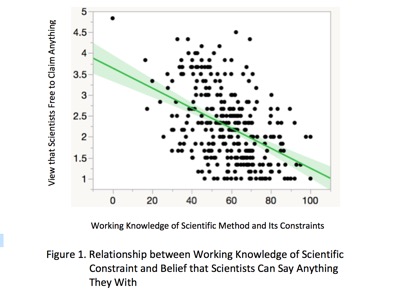
Trespassing Onto Other Experts’ Turf by Nathan Ballantyne and David Dunning
Trespassing Onto Other Experts’ Turf
by Nathan Ballantyne and David Dunning
March 2018
Experts’ knowledge and skills are a valuable resource for individuals and communities. One economist recently estimated that 75% of the capital in the United States lies in the knowledge and intellectual abilities of its people.1
But non-experts can easily fail to make good use of experts’ superior insights. Thus, one threat to the flourishing of human beings, individually and collectively, is the inability for non-experts to accurately recognize and take advantage of genuine expertise. At times, people even reject the input and advice of experts, a move that lies at the heart of our team’s project.
In a phrase, we explore epistemic trespassing, in which non-experts move into an expert’s field, reject their judgments, and supplant the expert’s perspectives with their own. A quick survey of contemporary news (or maybe anyone’s Twitter or Facebook feed!) will reveal examples in which people replace informed opinion with their own flawed and incomplete knowledge. This behavior is not a reflection of intellectual humility, and so its patterning and prevalence is worthy of careful study to examine how often people trespass and whether they do it out of wisdom or its opposite.
In coordinated projects, Dunning and collaborators at the University of Michigan investigate the psychological and social dynamics that promote or inhibit trespassing behavior, using the methods of empirical psychological research, while Ballantyne at Fordham University investigates normative questions about the appropriate evaluation of trespassing behavior, using the tools of philosophical analysis.
Dunning’s lab has recently completed a study, spearheaded by postdoctoral researcher Stephanie de Oliveira Chen, that explored when non-experts dismiss the conclusions of scientific experts. The key issue is knowledge of scientific method—and believing whether scientists’ claims are constrained by those methods or instead are free to roam wherever they please the scientist.
In the survey study, respondents were quizzed on their familiarity with the constraints built into the scientific method that limit scientific claims. Knowledge of these constraints proved to be important. Many participants expressed a distrust of scientific conclusions about vaccines, climate change, genetically modified organisms, and nuclear power. They expressed the view that scientists were neither trustworthy nor competent enough to make judgments on these topics. Importantly, this distrust of science was traced back to a belief that scientists are free to say anything they wish, that scientific data largely decorates viewpoints scientists already favor.
This dismissive opinion toward scientists was overwhelmingly predominant among subjects who lacked basic knowledge of the scientific method and how it restricts scientific conclusions. In contrast, subjects with an ample working knowledge of the scientific method and its restrictions had a more positive, trusting, and deferential view towards scientific conclusions.
Critically, epistemic trespassing does not just involve untrained novices claiming knowledge about a field they don’t possess. It also involves experts in one field who make claims beyond their actual competence in another. One example is Nobel laureate Linus Pauling, a chemist who championed the health benefits of Vitamin C even though medical experts denied them. In a forthcoming article in Mind, Ballantyne explores this sort of trespassing, arguing it is a commonplace problem in interdisciplinary research.
Researchers in multiple fields often explore shared questions about topics such as human freedom, rationality, the mind, and ethics. Many of these questions have been “hybridized.” They are answered by combining evidence and techniques from two or more distinct intellectual fields. But researchers who answer hybridized questions by drawing exclusively on the resources from one field risk trespassing on cross-field experts. These trespassers may form their opinions without the requisite skills or evidence needed to judge well.
If trespassers are reflective about their overreaching, they will often have reason to either develop cross-field expertise or avoid holding confident answers about hybridized questions. Learning about trespassing can thus be a powerful reason to change our intellectual practices.
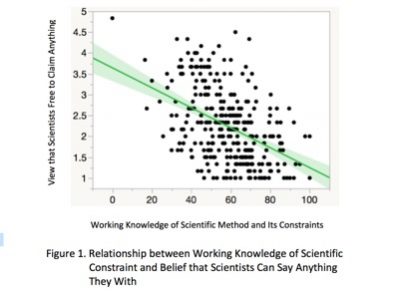
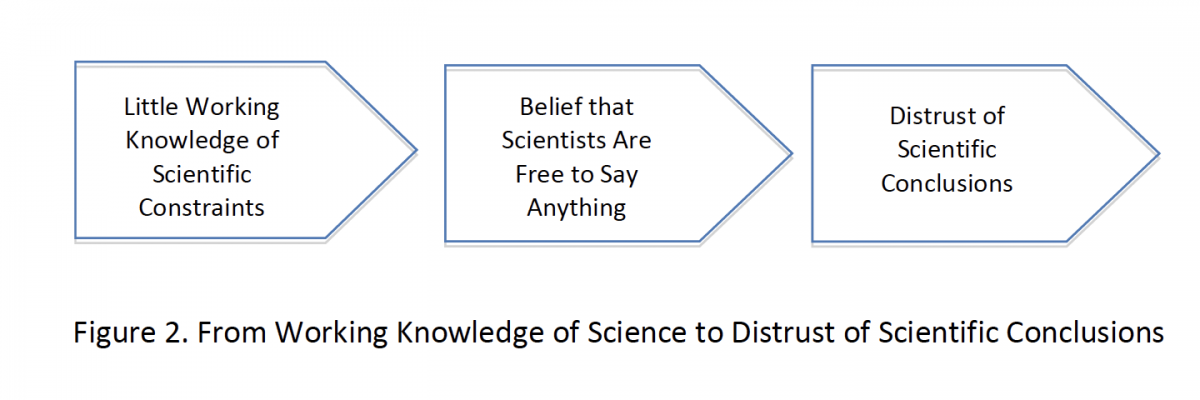
Of course, trespassing without apology is sometimes perfectly legitimate. Astrologers have skills that non-astrologers typically lack, for example, but scientifically-informed non-astrologers will believe astrologers lack reliable methods and so they can dismiss astrologers’ claims.
But at times researchers lack defensible reasons to trespass. One standard rationale is that “critical thinking” skills transfer across fields, allowing trespassers to make competent judgments about matters far away from their home turf. Effective transfer of skill, however, also requires familiarity with the domain of use. In other words, the further trespassers stray from “home”, the less likely they are to transfer their skills successfully.
Once researchers recognize they are in danger of trespassing, they do not just have reason to adjust their confidence or develop cross-field expertise. They also have motivation to rethink the design of their research communities. So many important questions are hybridized, and researchers in cognate fields should be encouraged to rub shoulders more than they ordinarily do. However, in doing so, they may make the heads sitting on those shoulders a little more cautious to be better able to address the complex challenges facing contemporary society.
1 Gary Becker, “The Age of Human Capital” in E. Lazear, Education in the Twenty-First Century, 2002.
[twitter_share size="large"]

Associations Between Religious Convictions and Intellectual Humility by Elizabeth Krumrei Mancuso
Associations Between Religious Convictions and Intellectual Humility
by Elizabeth Krumrei Mancuso
April 2018
Most people hold convictions in life. Convictions, by definition, involve firmly held beliefs that are often associated with behavioral commitments. My recent work has focused on how convictions and associated commitments relate to intellectual humility. Intellectual humility can be defined as a nonthreatening awareness of one’s intellectual fallibility (Krumrei-Mancuso & Rouse, 2016). This definition assumes the intellectually humble person understands that his or her cognitive faculties are not perfect and that his or her knowledge, perceptions, and beliefs are therefore sometimes incorrect. This is paired with an attitude of acceptance, whereby the person does not feel defensive about his or her mental fallibility.
It is most fitting to study intellectual humility in the context of convictions that are of greatest importance to people. This makes religious convictions a particularly relevant domain, because they offer so much in the way of finding meaning, coping with life’s struggles, terror management, and so forth. My research has been examining whether it is possible to be intellectually humble and simultaneously deeply committed to religious beliefs.
Some may assume intellectual humility to be incompatible with firm commitments. Yet, research has indicated that intellectual humility is unrelated to conformity, social confidence, or low self-regard, and has small, positive links to self-confidence (Krumrei-Mancuso & Rouse, 2016). This suggests that intellectual humility is not associated with modifying beliefs on the basis of social influence or to fit others’ standards and suggest that intellectual humility, therefore, may co-occur with convictions. Yet, this has rarely been examined with regard to specific convictions, such as religious beliefs and commitments.
This line of research has resulted in two particularly interesting findings so far. First, in addition to the emergence of small negative linear relationships between religious variables and intellectual humility, curvilinear relationships are emerging as well (Krumrei-Mancuso, 2018). For example, in the case of religious belief salience, prayer fulfillment, and religious fundamentalism, U-shaped links are suggesting that extreme scores at low and high levels of these religious variables tend to be associated with higher levels of intellectual humility compared to moderate levels of these religious variables. A possible explanation for this finding is that those with moderate levels of religion may be masking their ambivalence about their worldview with a façade of overconfidence that presents as a lack of intellectual humility. Alternatively, these findings could reflect a developmental faith trend, whereby individuals who move from no or very low faith to more substantial levels of faith may initially be encumbered by a more closed-minded approach, whereas those who continue to progress still further into more mature faith move toward greater intellectual humility as they shift away from black and white thinking, gain more appreciation for paradox and mystery, and experience greater acceptance of others (Fowler, 1981). Notably, a number of previous studies have found conceptually similar curvilinear relationships with religious variables and other outcomes such as prejudice toward outgroup members (Batson, Schoenrade, & Ventis, 1993; Gorsuch & Aleshire, 1974) and mental wellbeing (Galen & Kloet, 2011). Taken together, these findings suggest that individuals toward the middle of the continuum of religion may fare the least well on a variety of outcomes, including intellectual humility.
Second, and perhaps more important, is the finding that the links between religious variables and intellectual humility can be almost fully accounted for by right-wing authoritarianism (Krumrei-Mancuso, 2018). This holds in both cross-sectional and longitudinal analyses. Although religious participation, religious belief salience, prayer fulfillment, and religious fundamentalism initially seem to be associated with slightly less intellectual humility, controlling right-wing authoritarianism erases all of these links except for a small association between religious participation and less intellectual humility.
Right-wing authoritarianism is characterized by obedience to authority, conformity to conventional norms, and intolerance of deviance. Previous research has emphasized that right-wing authoritarianism and certain forms of religiosity can promote one another through a mutual emphasis on obedience to authority, conventionalism, and perhaps even feelings of self-righteousness or superiority (Hunsburger, 1995). Yet, right-wing authoritarianism is not religious in nature. The suggestion of the current research is that, for the most part, it is not religious conviction itself that is associated with decreases in intellectual humility, but rather, that sociopolitical attitudes about authority, conformity, and conventionality are associated with less intellectual humility. This parallels a theme in previous research about the links between religion and prejudice, as well (Hunsberger, 1995).
Thus, the emerging picture is that intellectual humility may function independently from many religious beliefs, behaviors, and experiences. It is possible that religious convictions co-occur with openness to improving one’s knowledge and beliefs. Although further research is needed, it seems that intellectual humility, involving an appreciation for the tentative nature of one’s personal knowledge, need not conflict with religious conviction.
References
Batson, C. D., Schoenrade, P., & Ventis, W. L. (1993). Religion and the individual: A social-psychological perspective. New York, NY: Oxford University Press.
Fowler, J. W. (1981). Stages of faith: The psychology of human development and the
quest for meaning. San Francisco: Harper & Row.
Galen, L. W., & Kloet, J. D. (2011). Mental well-being in the religious and the non-religious:
evidence for a curvilinear relationship. Mental Health, Religion & Culture, 14(7), 673
- doi:10.1080/13674676.2010.510829
Gorsuch, R. L., & Aleshire, D. (1974). Christian faith and ethnic prejudice: A review and interpretation of research. Journal for the Scientific Study of Religion, 13(3), 281-307. doi:10.2307/1384759
Hunsburger, B. (1995). Religion and prejudice: The role of religious fundamentalism, quest, and right-wing authoritarianism. Journal of Social Issues, 51(2), 113-129. doi:10.1111/j.1540-4560.1995.tb01326.x
Krumrei-Mancuso, E. J. (2018, in press). Intellectual humility's links to religion and spirituality and the role of authoritarianism. Personality and Individual Differences, 130C, 65-75.
Krumrei-Mancuso, E. J., & Rouse, S. V. (2016). The development and validation of the Comprehensive Intellectual Humility Scale. Journal of Personality Assessment, 98, 209-221. doi:10.1080/00223891.2015.1068174
[twitter_share size="large"]

Political Discussion and Civility in America’s Polarized Politics by Ryan Kennedy
Political Discussion and Civility in America’s Polarized Politics
by Ryan Kennedy, PhD
Associate Professor and Henderson Chair of Political Science
University of Houston
July 2018
While the level of polarization in American politics is widely bemoaned, there is little consensus on how to address this issue. On election night 2016, late night comedian Stephen Colbert explained the rancor of American politics by suggesting that Americans have “overdosed” on political discussion, “drinking too much of the poison” and “losing precious brain space we could be using to remember all the things we have in common.” Such a diagnosis is concerning for those who wish to encourage greater, and more direct, participation of citizens in political decision-making through political deliberation. Cass Sunstein, a professor at Harvard Law School, argued of deliberation that “the consequences of [people’s political] interactions are often to increase extremism, intensify polarization, and squelch internal disagreement.”
Some have argued that the antidote to this polarization is to purposefully expose people to opposing viewpoints. Whether it be through reinstatement of the Fairness Doctrine, technologies to encourage exposure to diverse opinions, or conducting public opinion polls that provide non-partisan information about the tradeoffs involved in a policy action. All of these efforts have a common thread in that they emphasize providing information over interpersonal communication.
Is there a role for deliberation in overcoming America’s polarization and encouraging mutual respect between sides? This debate can be traced all the way back to the great philosopher Immanuel Kant. Kant believed in the power of individuals to reason through countering arguments to come to an informed judgement. From this perspective, providing diverse information should be enough to encourage understanding. Kant’s modern inheritor, Jurgen Habermas, has argued that individuals reasoning on their own would never be able to overcome personal biases, and so engaging in actual discussion and reason giving is necessary.
Our research team has been conducting experiments to see which view is correct. We invited people from Idaho and North Carolina to participate in a discussion on immigration reform. Some participants were simply asked to review non-partisan information and go through an exercise where they were asked their opinion on a policy and confronted with a likely drawback to that policy. For some of these participants, whether they viewed the information provided was completely optional, for others it was more forcefully encouraged (they could not proceed with the survey until enough time had elapsed for them to view the information). Other participants were asked to participate in an hour-long online moderated political discussion using a deliberation platform developed by the Kettering Foundation and National Issues Forums. The illustration below shows what this platform looks like.
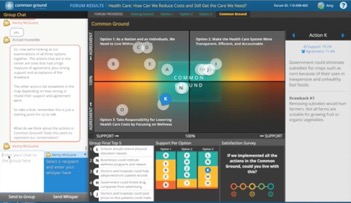
[Illustration from Gastil 2016.]
If exposure to competing views were all that was required for citizens to better understand competing views, then we should not see a difference between the groups after their sessions finished. The illustration below shows that this was not the case. Those who participated in the activity involving interpersonal discussion were more likely to report that they had greater respect for the views of those who disagreed with them, and much more likely to report that they had more sympathy for views they still opposed.


Moreover, as the next illustration shows, those who participated in the interpersonal discussion of immigration were far more satisfied with the experience than those who participated in the information-only sessions, with over 35% saying they were extremely satisfied compared with less than 10% in the information sessions.

This is not to say that providing diverse information is not important, but it is not simply a matter of making that information available. Those who were given additional encouragement to view the information reported similar gains in knowledge of the issue and greater appreciation of the tradeoffs involved in policies they supported to those who participated in the interpersonal discussion sessions, and these gains were significantly larger than those who were not given the additional encouragement to view the materials. In other words, simply making diverse information available is not likely to be enough – many will simply skip through that information if there is not additional encouragement, either through explicit incentives or interpersonal discussion.
These results suggesting that carefully constructed political deliberation may be a more effective antidote to polarization than simply diversifying the information provided to citizens, especially if there is no additional incentives for citizens to actually view the diversified information. Rather than discouraging political discussion, harkening back to a time when, as Colbert put it, we “stuck with safe subjects [for discussion],” we should be utilizing the tools provided by the modern communications and the internet to encourage constructive dialogue.
For those who are interested, you can join this effort by visiting the Common Ground for Action site. There you can sign up to participate in a deliberation session on a range of important issues, and you can volunteer to moderate sessions yourself if you would like to become involved.
[twitter_share size="large"]

When is intellectual humility revealed to others? by Benjamin R. Meagher
When is intellectual humility revealed to others?
by Benjamin R. Meagher
September 2018
Imagine that Bill, a new college freshman, is meeting his roommate, Tyler, for the first time. What will Bill try to get out of this initial interaction? Most likely, his primary goal will be to answer the simple question: What is Tyler like? Is he nice? Funny? Smart? Tidy? Social psychologists have long been interested in how people form impressions of one another. Perhaps the most fundamental issue that emerges from this topic is the question of accuracy—what predicts a greater likelihood of being right when forming these personality judgments?
One useful framework for understanding this process is the Realistic Accuracy Model (RAM), a theory of impression formation developed by Dave Funder at UC Riverside. This theory argues that for a perceiver to accurately determine the personality trait of a target person, he or she must observe and then utilize the behavioral information relevant to the trait being assessed. In other words, four things must happen: (1) the target person must engage in trait-relevant behavior(s), (2) that behavior must be available to the perceiver to observe, (3) the perceiver must actually notice that behavior, and (4) the perceiver must use that observation to form his or her judgment of the target.

Figure 1. The Realistic Accuracy Model of personality judgment (Funder, 1995).
Critically, traits vary in terms of how likely they are to satisfy these four steps, and thus they differ in terms of how accurately they are generally judged. For example, decades of research would lead us to believe that Bill will quite easily determine how extraverted Tyler is, even after a very brief interaction. Extraversion involves a number of explicitly observable behaviors, such as frequently talking and having high levels of energy (satisfying step one). Additionally, extraverted behaviors are inherently public, often done in dialogue with the perceiver himself (satisfying step two). Moreover, these behaviors are easily noticed and may even be directed towards the perceiver, so Bill is unlikely to not detect Tyler’s social tendencies (satisfying step three). Finally, there is wide cultural agreement regarding the behaviors associated with extraversion, making it likely that Bill will use his observation of Tyler’s frequent talking to form his judgment (satisfying step four). Although extraversion is fairly easy to detect, other traits may be more challenging. Tyler’s neuroticism, for example, would likely take longer for Bill to discover, in part because there are fewer observable behaviors explicitly relevant to this trait. Moreover, behaviors that are relevant (e.g., frequently expressing worries) will likely only be made available to Bill gradually with increased intimacy and deeper conversation.
My collaborators and I have been interested in applying this framework to understand how individuals form impressions about another person’s intellectual humility (IH). Although a number of philosophers, theologians, and psychologists have offered theoretical definitions of this trait—for example, owning one’s limitations, a willingness to change viewpoints in the face of appropriate evidence, a low concern for intellectual status (e.g., Krumrei-Mancuso & Rouse, 2016; McElroy et al., 2014; Whitcomb, Battaly, Baehr, & Howard-Snyder, 2017)—it remains unclear what criteria the average person uses when forming this judgment about someone else. In terms of the RAM, the key questions are: (a) what behaviors are relevant to IH, and (b) in what social contexts are these behaviors likely to be made available?
In our work up to this point, we have primarily investigated judgments of IH during collaborative interactions. In this context, the ability for groups to reach consensus about who is high and who is low on this trait has varied. In Meagher, Leman, Bias, Latendresse, and Rowatt (2015), we found that 20-minute collaborative interactions (e.g., sharing strengths, brainstorming, and solving math problems) were insufficient for group members to reliably identify IH. Even longer periods of interaction may also fail to reveal IH. In the summers of 2016 and 2017, we had students in introductory philosophy courses provide their impressions of their classmates after several weeks of interaction (Meagher, Gunn, Sheff, & Van Tongeren, under review). Here too, student impressions of their classmates’ IH were almost entirely idiosyncratic. Even so, we have found contexts where consensus is reached. For example, in courses where students work on group projects over the course of the semester, we have consistently found agreement regarding their impressions of teammate IH, with consensus accounting for approximately 11-16% of the variance in judgments. What is guiding these impressions? Based on these studies, the primary profile of an intellectual humble person appears to be someone who is also viewed as introverted, agreeable, conscientious, and low in dominance.
One of the main goals of our ongoing project is to expand on this work by investigating how intellectually humble people actually interact socially. That is, what behaviors distinguish them from others? Rather than focusing exclusively on collaborative tasks, we have expanded our work to look at impression formation during contentious social interactions specifically. Over the last several months, we have been hosting focus groups at Hope College, where participants discuss a political issue on which they disagree (e.g., death penalty, affirmative action). We are most interested in discovering what behaviors are characteristic of those identified as high in IH by their fellow group members during these dialogues. To answer this question, we are currently working with hours of transcribed conversations, coding participant statements on a wide range of variables, including speaking time, number of interjections, frequency of self-disclosure, asking questions, among many more. It is our hope that by empirically revealing the patterns of behavior reflecting IH, we will become better able to recognize the specific types of communication that improve group functioning, even during contentious dialogue.
Funder, D. C. (1995). On the accuracy of personality judgment: A realistic approach. Psychological Review, 102, 652–670.
Krumrei-Mancuso, E. J., & Rouse, S. V. (2016). The development and validation of the Comprehensive Intellectual Humility Scale. Journal of Personality Assessment, 98, 209–221.
McElroy, S. E., Rice, K. G., Davis, D. E., Hook, J. N., Hill, P. C., Worthington, E. L., Jr., & Van Tongeren, D. R. (2014). Intellectual humility: Scale development and theoretical elaborations in the context of religious leadership. Journal of Psychology and Theology, 42, 19–30.
Meagher, B. R., Gunn, H., Sheff, N., & Van Tongeren, D. R. (under review). An intellectually humbling experience: Changes in interpersonal perception and cultural reasoning across a 5-week course.
Meagher, B. R., Leman, J. C., Bias, J. P., Latendresse, S. J., & Rowatt, W. C. (2015). Contrasting self-report and consensus ratings of intellectual humility and arrogance. Journal of Research in Personality, 58, 35–45.
Whitcomb, D., Battaly, H., Baehr, J., & Howard-Snyder, D. (2017). Intellectual humility: Owning our limitations. Philosophy and Phenomenological Research, 94, 509–539.
[twitter_share size="large"]
